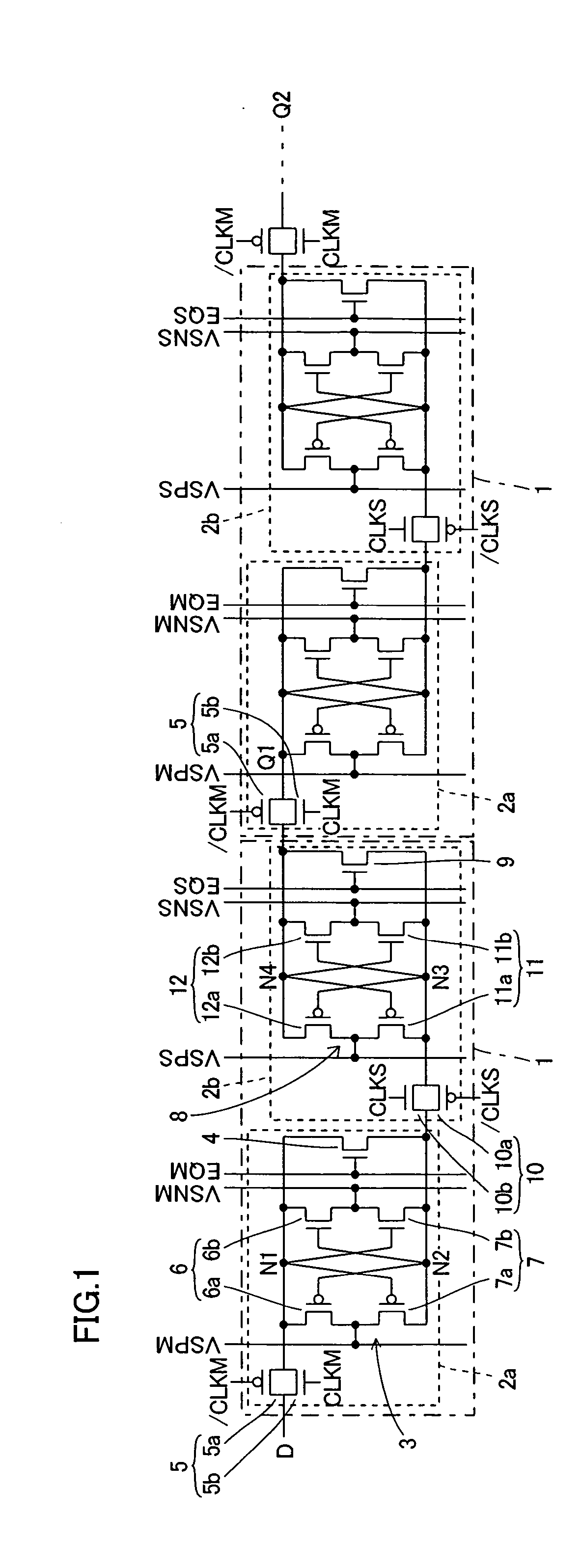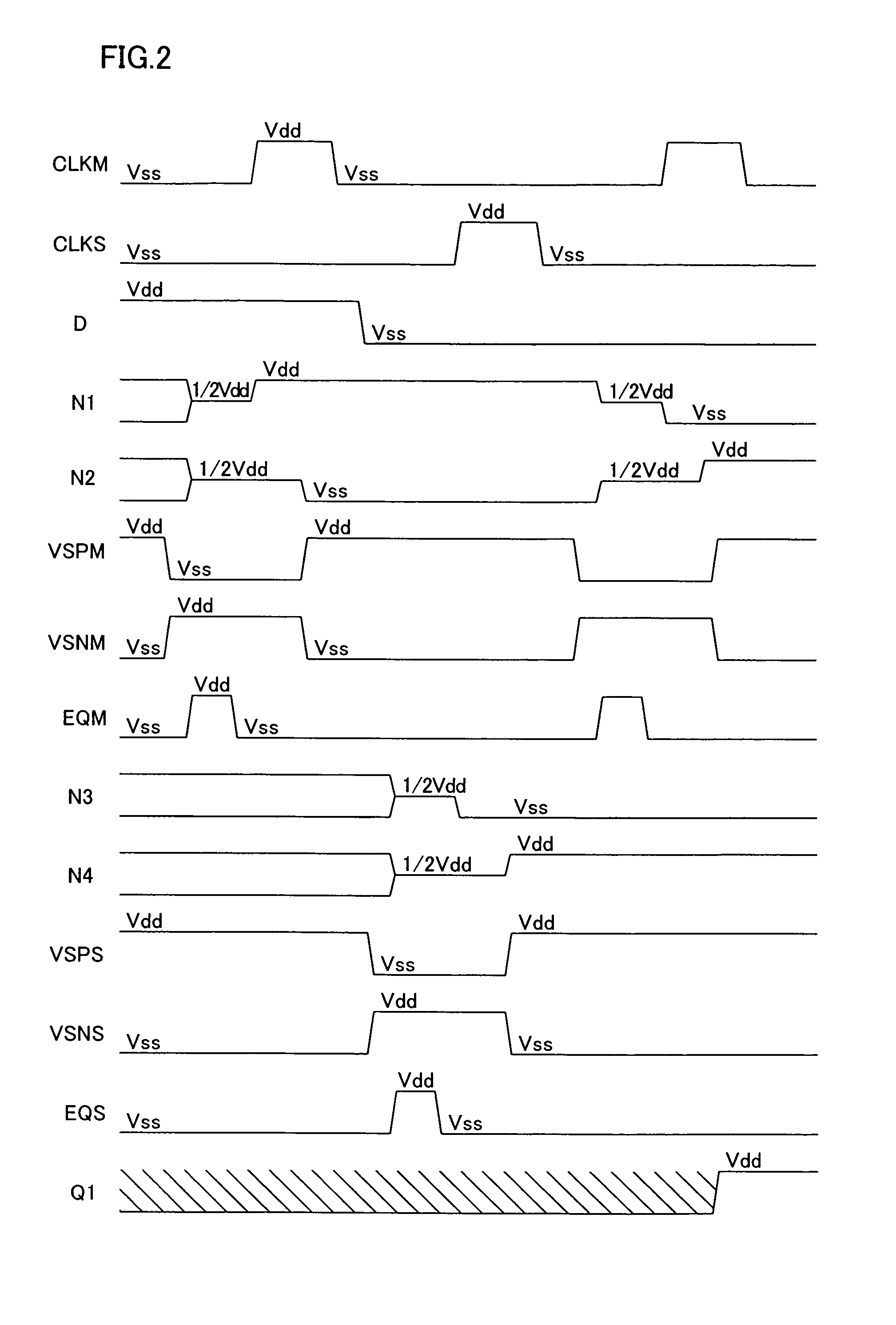Flip-flop circuit
- Summary
- Abstract
- Description
- Claims
- Application Information
AI Technical Summary
Benefits of technology
Problems solved by technology
Method used
Image
Examples
first embodiment
[0044] The circuit structure of a shift register circuit employing flip-flop circuits according to a first embodiment of the present invention is described with reference to FIG. 1.
[0045] As shown in FIG. 1, the shift register circuit is constituted of a plurality of stages of serially connected flip-flop circuits 1 according to the first embodiment. Each of the plurality of stages of flip-flop circuits 1 is constituted of two stages of delay latch circuits 2a and 2b. The delay latch circuits 2a and 2b are examples of the “first latch circuit” and the “second latch circuit” in the present invention respectively. The first-stage delay latch circuit 2a is formed to receive a prescribed input signal from a node D, latch the prescribed input signal for a constant period and thereafter output a signal obtained by inverting the potential of the prescribed input signal to the second-stage delay latch circuit 2b. The second-stage delay latch circuit 2b is formed to receive the output signa...
second embodiment
[0086] The structure of a DRAM employing a shift register circuit including flip-flop circuits according to a second embodiment of the present invention is now described with reference to FIG. 8.
[0087] As shown in FIG. 8, the DRAM according to the second embodiment includes memory cells 21 provided on positions where a word line WL and bit lines BL1 intersect with each other, a shift register circuit 22 and n-channel transistors 23a and 23b. Each memory cell 21 is constituted of an n-channel transistor 21a and a capacitor 21b. Either the source region or the drain region of the n-channel transistor 21a is connected to the corresponding bit line BL1, and either the drain region or the source region is connected to the capacitor 21. The gate of the n-channel transistor 21a is connected to the word line WL. The capacitor 21b holds charges responsive to data stored in the memory cell 21. In each of the n-channel transistors 23a and 23b, either the source region or the drain region is c...
PUM
 Login to View More
Login to View More Abstract
Description
Claims
Application Information
 Login to View More
Login to View More - R&D
- Intellectual Property
- Life Sciences
- Materials
- Tech Scout
- Unparalleled Data Quality
- Higher Quality Content
- 60% Fewer Hallucinations
Browse by: Latest US Patents, China's latest patents, Technical Efficacy Thesaurus, Application Domain, Technology Topic, Popular Technical Reports.
© 2025 PatSnap. All rights reserved.Legal|Privacy policy|Modern Slavery Act Transparency Statement|Sitemap|About US| Contact US: help@patsnap.com



